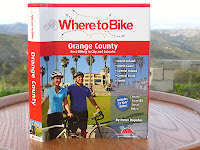This is a highway traffic yield sign identical to that found at the corner of Forest Avenue and Broadway in Laguna Beach. From the DMV handbook it says: "A three-sided red YIELD sign indicates that you must slow down and be ready to stop, if necessary, to let any vehicle, bicyclist, or pedestrian pass before you proceed." Notice the wording be ready to stop. It also says S T O P and refers to passing BICYCLIST OR PEDESTRIAN cross traffic in your path.
Unfortunately this intersection is utilized like a freeway on-ramp rather than a multi-modal merge lane because CALtrans treats it so. Most motorists accelerate merging left instead of looking right to heed the yield sign. Whether or not CALtrans meets it's mandates for Complete Streets (DD-64) by accommodating all road users safely, we road users remain responsible for one-another by complying with well intended but misplaced signs and impotent rules. -LS
Unfortunately this intersection is utilized like a freeway on-ramp rather than a multi-modal merge lane because CALtrans treats it so. Most motorists accelerate merging left instead of looking right to heed the yield sign. Whether or not CALtrans meets it's mandates for Complete Streets (DD-64) by accommodating all road users safely, we road users remain responsible for one-another by complying with well intended but misplaced signs and impotent rules. -LS










